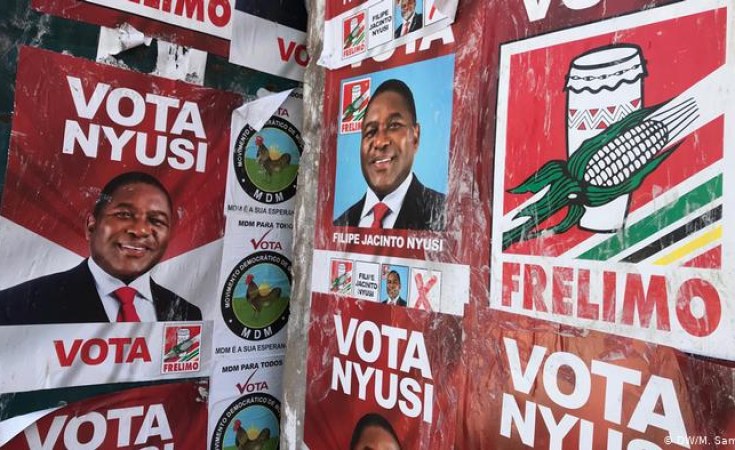European Union and European Parliament observers Friday demanded that election authorities publish results for all the individual polling stations. The district results being published this weekend show that the election authorities have the data, and could put it on the web now, but instead refuse to publish it.
The biggest criticism of the recent Venezuela elections was that it did not release data on individual polling stations. Mozambique has not done so in 15 years.
In some districts the district elections commissions (CDE) are releasing a 25-30 page edital. This contains not only the district results, but the results from all polling stations in the district. In other districts, they are extracting the three elections summaries for the district, but not releasing the whole package. But what is obvious is that the software supplied by STAE is used to enter the polling station results to compile the district results. The page below is from Muevela, Zambezia, and was given to observers and parties. Note that it is actually labelled "Mapa de Apuramento Distrital" so it is part of the edital which should be distributed.
In the 1994, 2004 and 2009 elections the CNE actually published the individual polling station results, in 1994 in a printed book and in the other two as a CD-rom. For 2014 a CD-rom was produced and given to observers in 2019, but it was not made available locally. Since then, nothing.
The electoral law allows observers to see all parts of the tabulation, and they could be given this now, because all but two district counts have been completed.
But it is clear that the CNE and STAE do not want to allow close scrutiny. Let us look at the first four rows of the table above. Each row has the totals from one polling station. The top four polling stations are at EPC Muevela, and each has 800 registered voters. Below we look at just the right hand end of the four rows and their headings.
As people register at their nearest school, we expect polling stations to have similar (but not identical) results so we would expect the two rows to be similar. But they are not. First look at the invalid votes (nulos) - 65, 6, 64, and 1. That much variation is highly unlikely. So look at the votes for Momade and Mondlane. If we add them together we see 18, 71, 7, 51 - also unlikely. What we see in the first and third polling stations, votes have been taken away from Momade and Mondlane and declared invalid, so are now in the nulos column.
Returning to the full page above, we can see eight other polling stations were votes have been taken away from Momade and Mondlane and put in either the nulos or em branco (blank votes) columns. So just looking at this single page shows that half of the polling stations had fraudulent action during the count.
It is hardly surprising that CNE and STAE do not want observers and the general public looking too closely, because it is easy to spot fraud.


